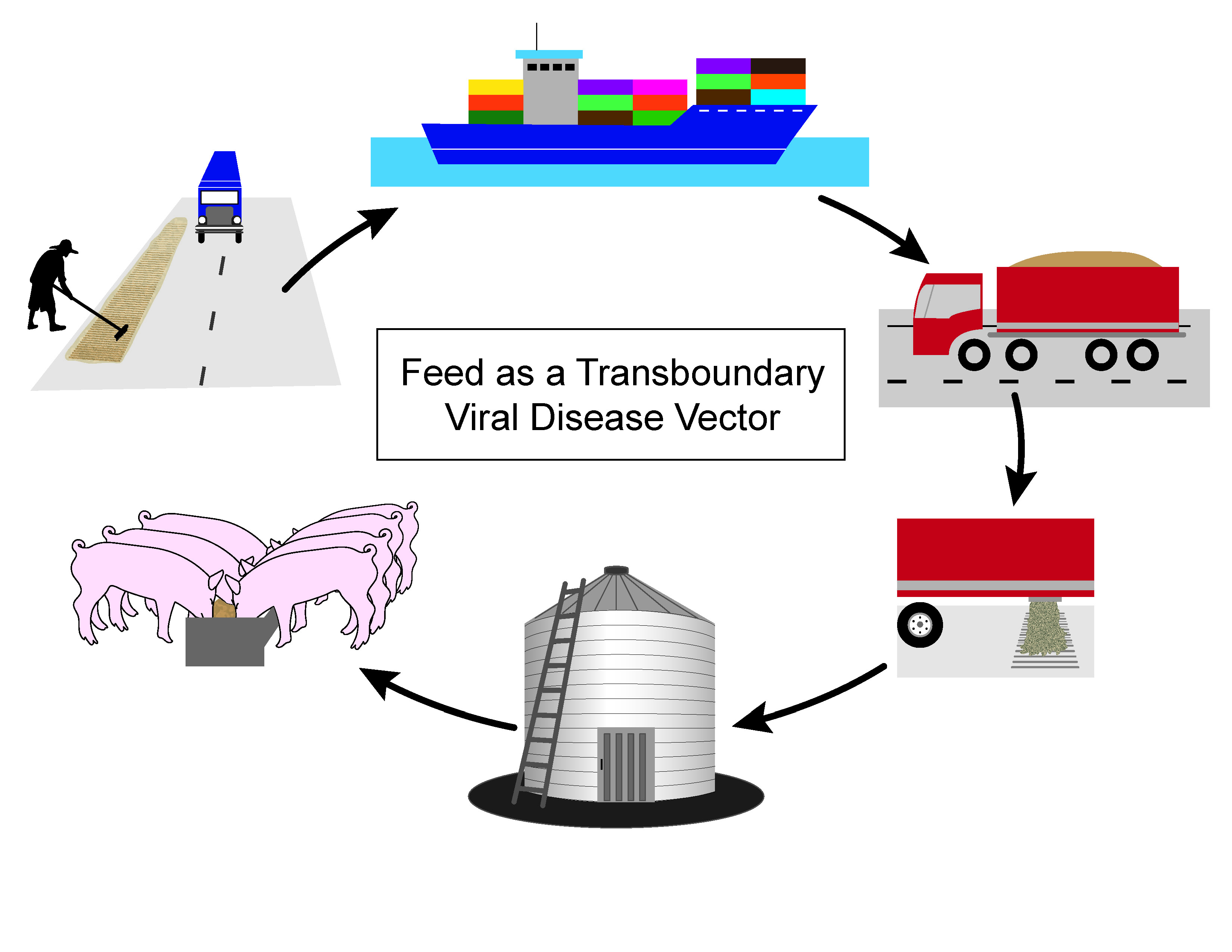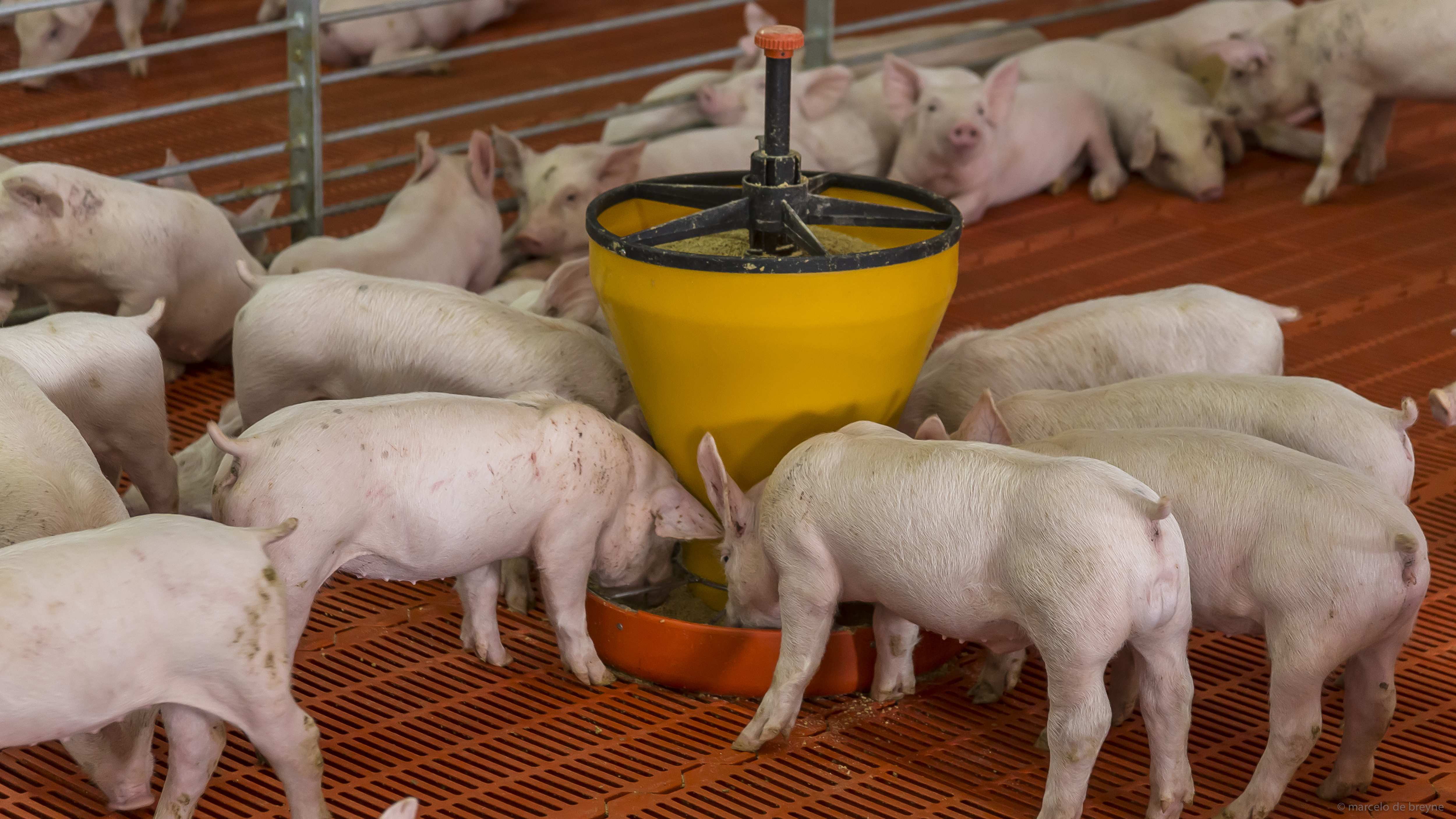



New research suggests that ASF can spread through feed
A new publication in the journal Animals summarizes the potential for African swine fever (ASF) to spread through feed.Eight years of extensive research, including work at Kansas State University, has led to a disquieting scenario for swine producers: Feed and feed ingredients could potentially serve as means for the introduction and transmission of foreign animal diseases of swine.
Megan Niederwerder, assistant professor of diagnostic medicine and pathobiology in the College of Veterinary Medicine, recently published an overview on the significance of the collective feed research related to swine viruses and specifically to African swine fever virus. "Risk and Mitigation of African Swine Fever Virus in Feed" was published 18 March in the journal Animals. Research funding was provided by the National Pork Board.

© Animals
The illustration shows how feed ingredients may serve as transboundary vectors of swine viral diseases. Risky agricultural practices, such as drying grains on roadways represented in upper left corner, may contaminate feed ingredients in countries with circulating foreign animal diseases. The virus can potentially be transported across oceans and highways where the virus could survive and present a potential threat to livestock.
"Since the 2013 introduction of porcine epidemic diarrhea virus into the United States, researchers have investigated the potential role of feed and feed ingredients for the transboundary spread of swine diseases," Niederwerder said. "Feed ingredients are commodities traded worldwide, and the US imports thousands of metric tonnes each year from countries where circulating foreign animal diseases have been identified."

ASF is the most significant foreign animal disease threat to US swine production, Niederwerder said. The primary goal of negative countries, such as the US, is to prevent ASF entry as there are no vaccines or treatments available.
"The recent introduction of ASF into historically negative countries over the last few years has heightened the risk for further spread," Niederwerder said. "Investigations in my laboratory have characterized the stability of the African swine fever virus in feed ingredients subjected to transoceanic shipment conditions, the virus's transmissibility through the natural consumption of plant-based feed, and the mitigation potential of certain feed additives to inactivate African swine fever virus in feed."
Niederwerder's latest review describes the current knowledge of feed as a risk for swine viruses and the opportunities for mitigating the risk to protect US pork production and the global swine population from African swine fever and other foreign animal diseases.
"Epidemiological evidence has linked contaminated feed with African swine fever virus field outbreaks in both Europe and Asia," Niederwerder said. "A rapidly expanding geographic distribution of African swine fever virus continues to increase the risk of US incursion. With economic losses of African swine fever virus introduction into the US swine herd estimated at more than $15 billion due to production losses and market disruption, the importance of preventing entry cannot be overstated."
Niederwerder's article looks at potential ways to reduce African swine fever virus risk through feed biosecurity as well as through both physical and chemical mitigation protocols, such as heat treatment, storage time, and antimicrobial feed additives.
"It is critically important that feed mitigation strategies continue to be investigated and adopted to reduce the risk of ASFV or other foreign animal disease entry through this route," Niederwerder said.







